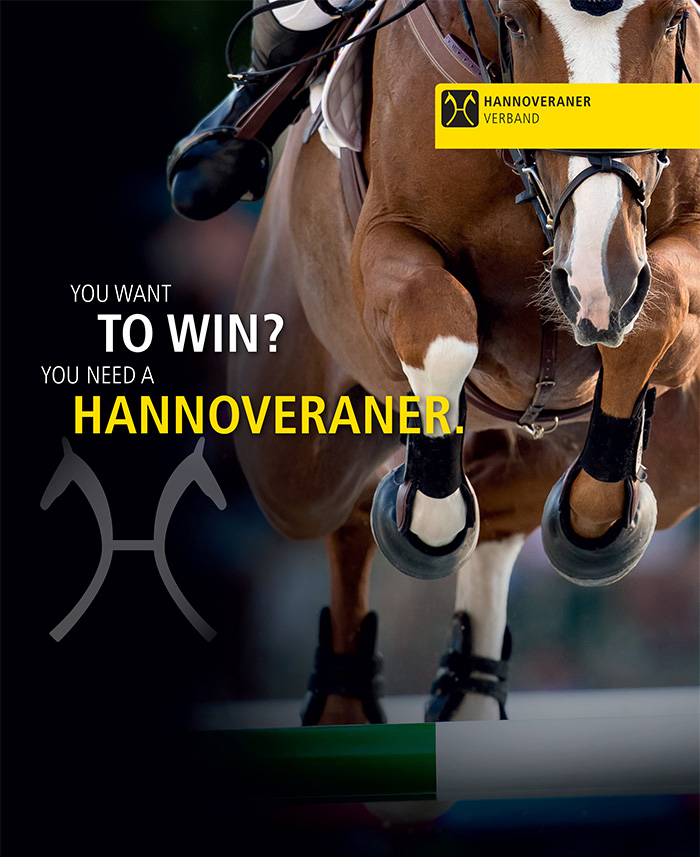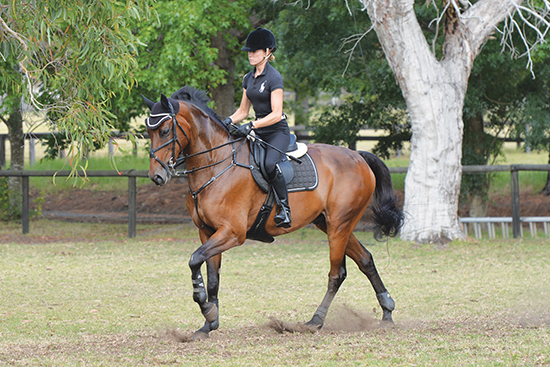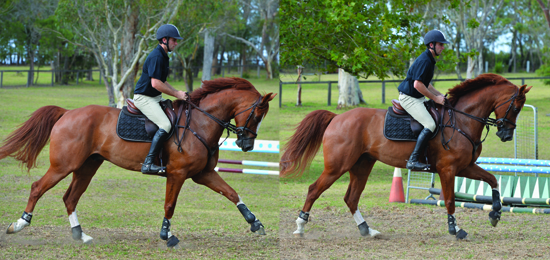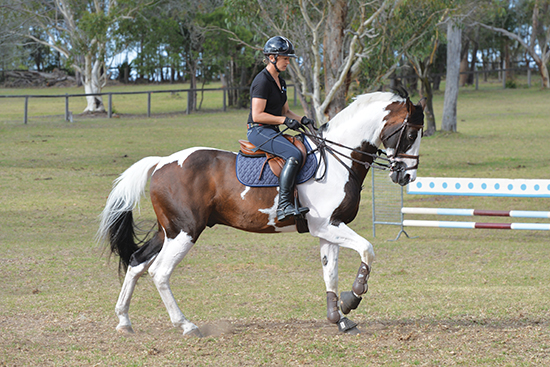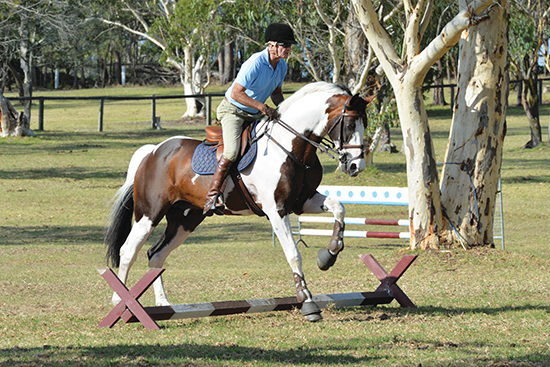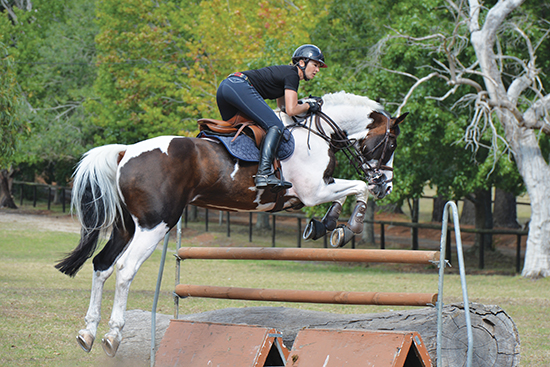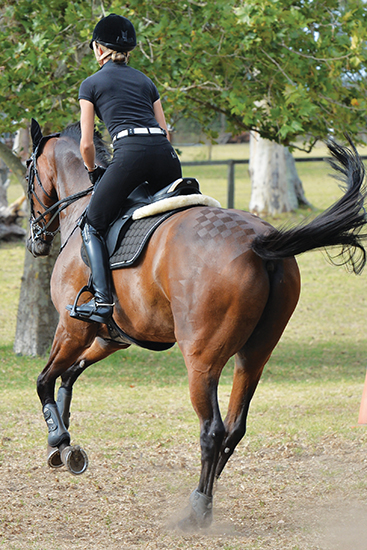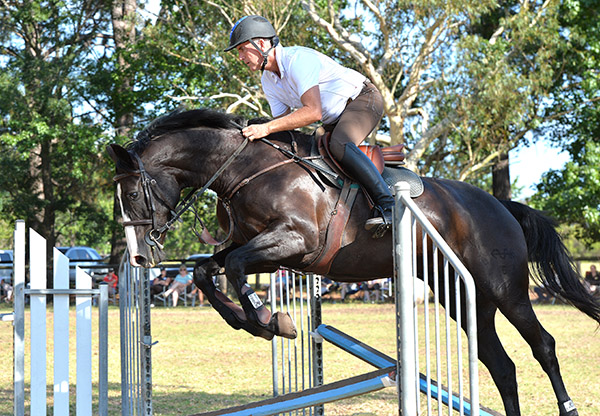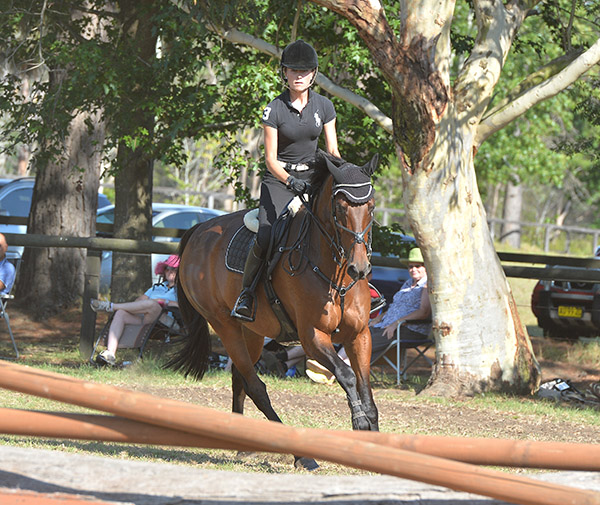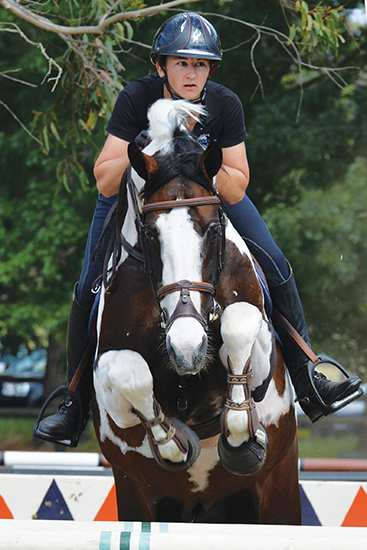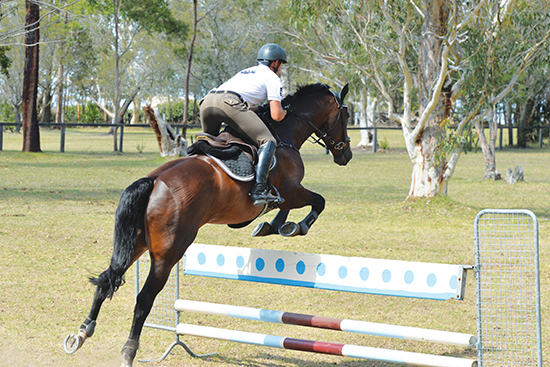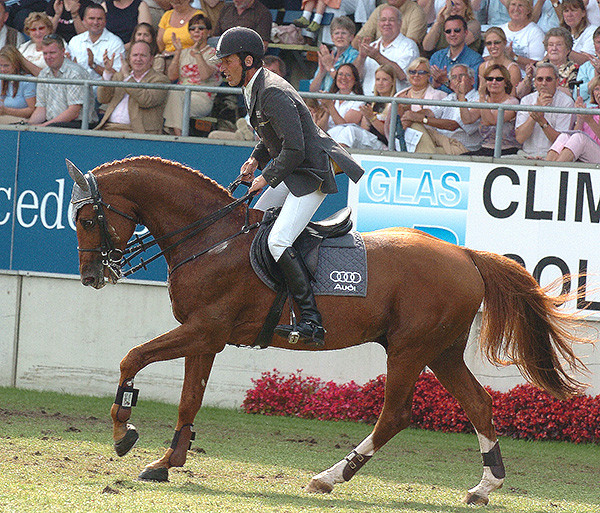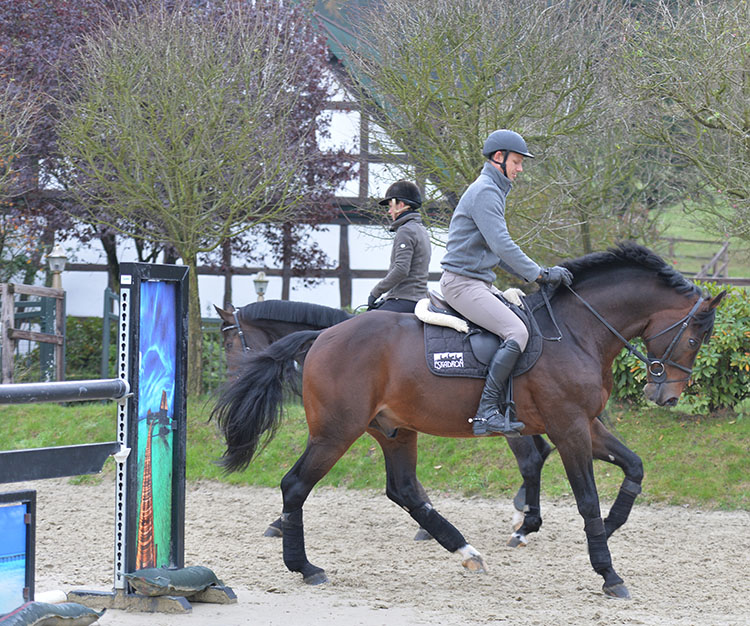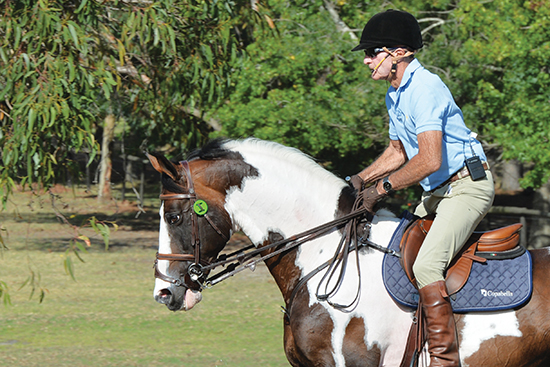 Story by Christopher Hector & Photos by Roslyn Neave
Story by Christopher Hector & Photos by Roslyn Neave
George Morris contemplated a career in the movies, and he is a natural entertainer. “The pussy cat arches its back and its hind leg comes under itself, once you get the horse’s hind leg under its body and active, the croup lowers, and like a ripe plum falling off the tree, the horse’s head assumes the right placement.”
“Wait for the leg to bring the horse’s head down, and especially the inside hind leg. The great Isabell Werth says the reason for shoulder in and half pass, is to get the control of the inside hind leg.”
more follows
George is also letting the figures work their own magic to deal with the natural one sidedness of the horse. “Eight out of ten horses are hollow to the right, and their left side is the hard convex side. Ride a figure eight, that will give you the feel of the soft side and the hard side. You have to make them both the same, both soft. If the horse is heavy on the right side, hard on his right side, he is not giving you his right hind leg.”
The work on the transitions continues, trot, halt, rein back. “Don’t rein back every time or they will anticipate, rein back every other time, ask for two, three, four steps and it is important that the horse goes directly forward out of the rein back.”
Let’s get fancy laterally: “Ten strides shoulder in, ten strides shoulder out, concentrating on the horse’s hind leg. As Kyra Kyrklund says, shoulder in and shoulder out are leg exercises. What doesn’t change in this exercise is the rhythm. Now lengthen ten, shorten ten, and remember when you shorten, it is way more difficult to keep the impulsion and the straightness.”
“Now let’s try another great exercise. Simple changes of lead on the track. Start every eight strides, then every six, then every four strides. This is a great exercise to collect the canter. Watch how straight that Pinto is in the canter depart…”
Truly Brooke Campbell and Visage are the stars of this exercise.
“Now the counter canter, I want them to listen to the outside leg. Volté in counter canter, six or eight or ten metre voltés.”
George has obviously liked the look of the coloured stallion; “I’m going to take that Pinto.”
But George has seen something that he feels he can improve in the way the horse goes, and that is the tendency to either get too deep and over flexed, or to grab the rein. When Visage does grab the rein, George very swiftly grabs the rein back:
“I resist in proportion to his resistance. He grabs my hand, I grab his mouth. Of the three, seat, legs and hands, hands are the hardest to master.”
But again you can see the change, Visage’s neck is lengthening, coming better out of the shoulder, with the poll at the highest point and his nose right on the vertical, it is time for Mr Morris to have some fun – forward seat dressage. He rides some three times changes, then some pirouette, all in light seat.
“This is a super horse: submissive and relaxed, not a subservient slave. I’d really like to stay on this horse…” Oh yeah, next comes, I would like to take him home with me, but really this time the visitor means it.
more follows
Watching this work you can see the effect, the horses start to move in a different way, their backs are supple and the quality of their movement, way better. Still I wonder if when they get home the riders will really find the time to practice this gentle ballet of transitions? I do know that when I had the chance to sit and watch Ludger Beerbaum and his team work at home, they found the time but I guess that is why Ludger is such a super star…
Now it really is time to start jumping. Over that log, 54 feet – four or five strides – to an oxer, then circle right, flying change, back over the oxer and over the log. We might be jumping but the emphasis is still on how we ride:
“Think about the half halts, the half is up towards your stomach, even your change, NO bearing down on the horse’s bars, they hate that. If your horse is heavy in the hand raise it. If it feels good, it is probably right, if it feels bad it is probably wrong.”
Another pet aversion, croup high, gets a run:
“In the change, tail swishing is light in the croup – so leg him forward when he does that. The ultimate correction is always the leg. You should be obsessed with inside leg to outside rein, after the fence, think that – it is always the same, every horse, every situation, inside leg to outside rein.”
Another gymnastic line, this time, vertical, eight or nine strides to the oxer, then a steady three or four to the log. Chris Chugg on his youngster is getting ten instead of nine: “Just look where you are going and you will get there in nine. An easy nine sets up the four strides. I don’t count, I just know how I want to ride it to see the count. Counting to yourself is distracting, know how you want to ride the fence – out or in.”
Once again, this might be a jumping exercise, but the change from right rein to left rein, is working on the horse’s body: “This gets the horse super soft to your hands and legs, this supples the horse, and when the horse is supple, the jump gets better.
“Ride this exercise back and forth until the horse gets soft and is thinking about the fences. Brooke, that’s precise, that’s like dressage.”
Four fences: triple bar, vertical, vertical, oxer. Riders are told, that the turn to the triple will set up the sequence: “Let the horse go forward out of the turn and measure the fence. I always have a triple bar in every clinic, it is the easiest for the horse, psychologically difficult for the rider. You have to sit still and quiet and forward with your body and let the horse use himself. The greatest enemy to riding is called stiff.”
Swedish oxer, four strides to open water, four strides to a plank:
“Let the plank hold the horse, use a little voice, not too much, just enough to help. The plank will back them up – I know it is a bit death defying, but give. Do as little as possible to help your horse. I don’t care if they chest it, I don’t care if the horse twists or hangs, they have to jump it, that’s their problem.”
“At the horse show you can help them but in my training I am very strict, less hand and let the horse learn self carriage.”
Kanndarco, combining two successful bloodlines and available in Australia from International Horse Breeders: http://www.ihb.com.au
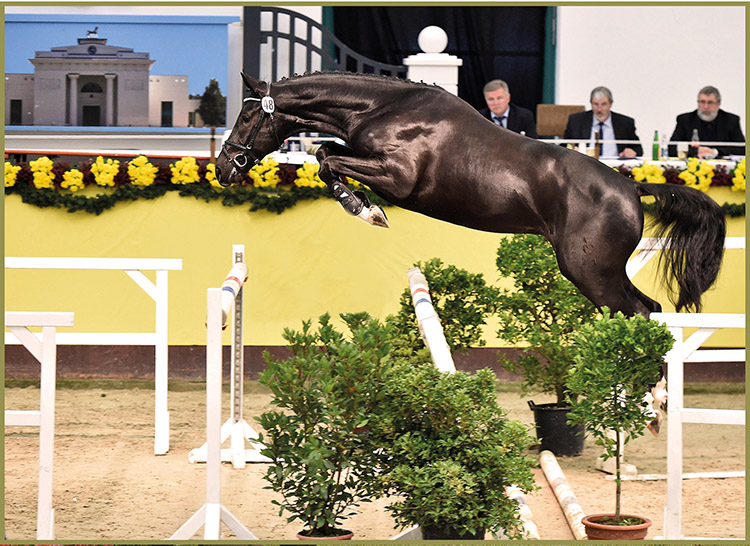
SOME MORE WORDS FROM GEORGE
Your riders here even seem quite comfortable with the lateral work?
“Some jumper riders don’t agree with lateral work. There is no principle of dressage that I don’t relate to jumping. I can’t discard any piece of dressage for jumping horses, and over the course of history, with the French and the Dutch and the Germans, even the Swiss, dressage as the basis has been successful over the decades, each person interprets it a little differently. Bill Steinkraus and I were talking it over last summer, he points out that I am still trying to combine the French and the German schools, and that now there is a great combination of the two schools.”
That’s what would you call Ludger Beerbaum?
“Exactly, and his pupils even more so – they ride very light. Look at Marco Kutscher, I’d give him a horse.”
This article first appeared in the May 2014 issue of THM.

